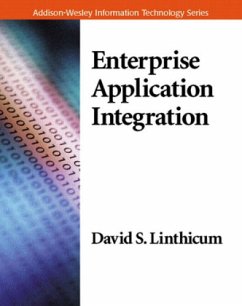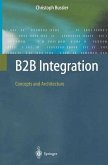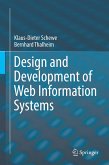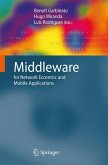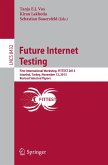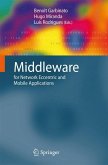Organizations that are able to integrate their applications and data sources have a distinct competitive advantage: strategic utilization of company data and technology for greater efficiency and profit. But IT managers attempting integration face daunting challenges--disparate legacy systems; a hodgepodge of hardware, operating systems, and networking technology; proprietary packaged applications; and more.
Enterprise Application Integration (EAI) offers a solution to this increasingly urgent business need. It encompasses technologies that enable business processes and data to speak to one another across applications, integrating many individual systems into a seamless whole.
Enterprise Application Integration provides a comprehensive examination of EAI. You will find an overview of EAI goals and approaches, a review of the technologies that support it, and a roadmap to implementing an EAI solution. You will also find an in-depth explanation of the four major types of EAI: data-level, application interface-level, method-level, and user interface-level. The book describes in detail the middleware models and technologies that support these different approaches, including:
Application servers, including the use of Enterprise JavaBeans (EJB) and ActiveX
Message-oriented middleware (MOM) and remote procedure calls (RPCs)
Distributed objects, looking at CORBA and COM
Database-oriented middleware and standards, including ODBC, JDBC, and OLE DB
Java middleware standards
Message brokers
New process automation and workflow technology This practical guide to implementing an EAI solution leads you through all the major steps, including identifying sources of data, building the enterprise metadata model, process integration, identifying application interfaces, mapping information movement, selecting and applying the technologies, testing, and maintenance. Other key topics include integrating packaged applications such as SAP R/3 and PeopleSoft, integrating the supply chain using EAI, the role of XML, and process automation. Comprehensive, practical, and clearly written, this essential resource will help anyone involved in this important business area understand the nature of EAI, its tools and techniques, and how to apply it for a significant business advantage.
0201615835B04062001
Enterprise Application Integration (EAI) offers a solution to this increasingly urgent business need. It encompasses technologies that enable business processes and data to speak to one another across applications, integrating many individual systems into a seamless whole.
Enterprise Application Integration provides a comprehensive examination of EAI. You will find an overview of EAI goals and approaches, a review of the technologies that support it, and a roadmap to implementing an EAI solution. You will also find an in-depth explanation of the four major types of EAI: data-level, application interface-level, method-level, and user interface-level. The book describes in detail the middleware models and technologies that support these different approaches, including:
Application servers, including the use of Enterprise JavaBeans (EJB) and ActiveX
Message-oriented middleware (MOM) and remote procedure calls (RPCs)
Distributed objects, looking at CORBA and COM
Database-oriented middleware and standards, including ODBC, JDBC, and OLE DB
Java middleware standards
Message brokers
New process automation and workflow technology This practical guide to implementing an EAI solution leads you through all the major steps, including identifying sources of data, building the enterprise metadata model, process integration, identifying application interfaces, mapping information movement, selecting and applying the technologies, testing, and maintenance. Other key topics include integrating packaged applications such as SAP R/3 and PeopleSoft, integrating the supply chain using EAI, the role of XML, and process automation. Comprehensive, practical, and clearly written, this essential resource will help anyone involved in this important business area understand the nature of EAI, its tools and techniques, and how to apply it for a significant business advantage.
0201615835B04062001

